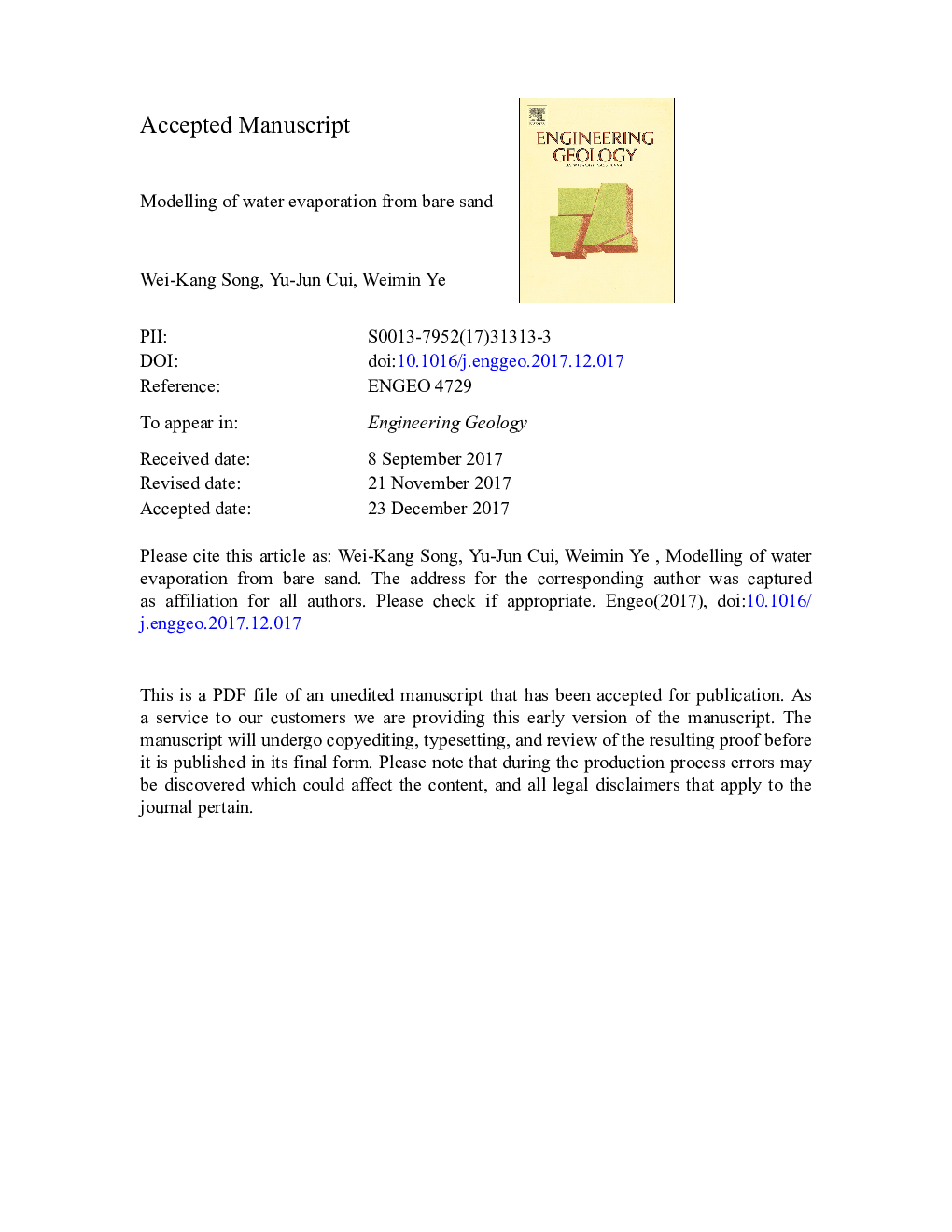| Article ID | Journal | Published Year | Pages | File Type |
|---|---|---|---|---|
| 8915991 | Engineering Geology | 2018 | 40 Pages |
Abstract
A soil suction-based model for predicting water evaporation from bare sand surface was developed. The soil water evaporation was considered as a function of the soil surface suction or soil surface relative humidity. The effect of the progress of dry soil layer during evaporation was also accounted for by introducing a function of relative humidity distribution inside the dry soil layer. The model was validated on the basis of four sand evaporation tests using environmental chamber under different atmospheric conditions. The results show that solely accounting for the air relative humidity as driving force for evaporation is not appropriate because the soil suction at the air/soil interface is much higher than that deduced from the air relative humidity. Moreover, the relative humidity distribution inside the dry soil layer is depth dependent, and can be described by a nonlinear function of depth. The effect of the dry soil layer was found significant on the evolution of actual evaporation. Indeed, with the presence of this layer, the actual evaporation rate can decrease sharply. Comparison between the model simulations and the test results shows that with consideration of the effect of this dry layer, the model can satisfactorily describe water evaporation from sand under different atmospheric conditions.
Related Topics
Physical Sciences and Engineering
Earth and Planetary Sciences
Geotechnical Engineering and Engineering Geology
Authors
Wei-Kang Song, Yu-Jun Cui, Wei-Min Ye,
